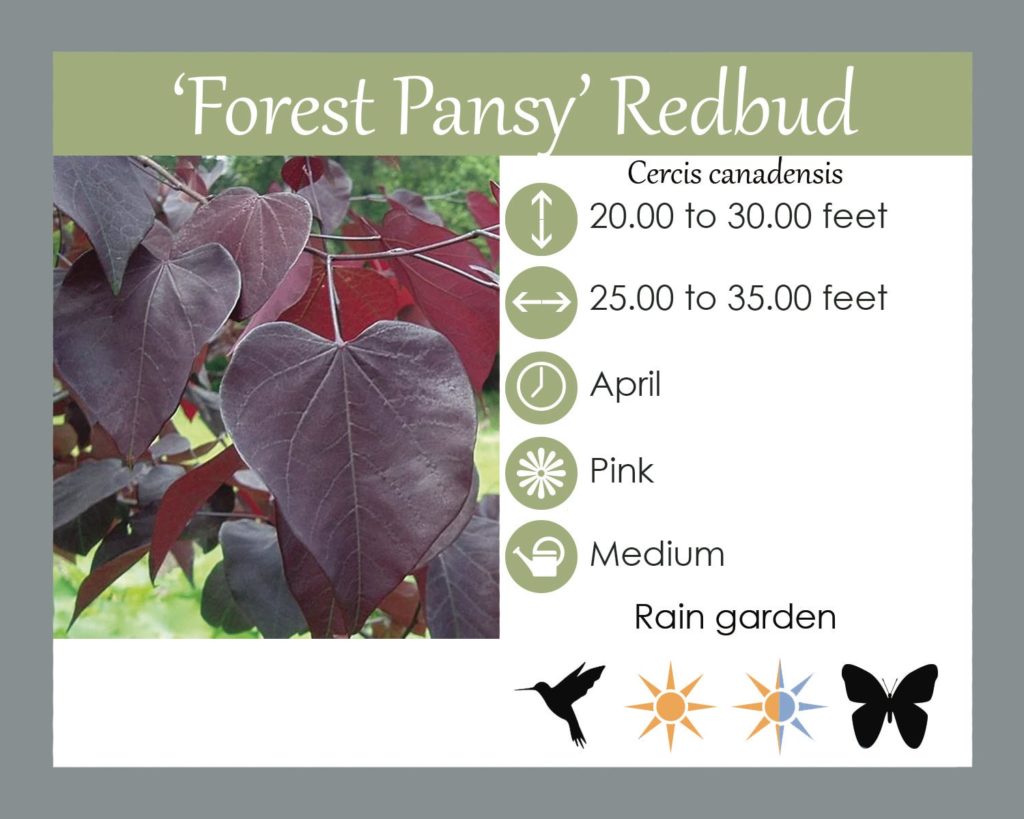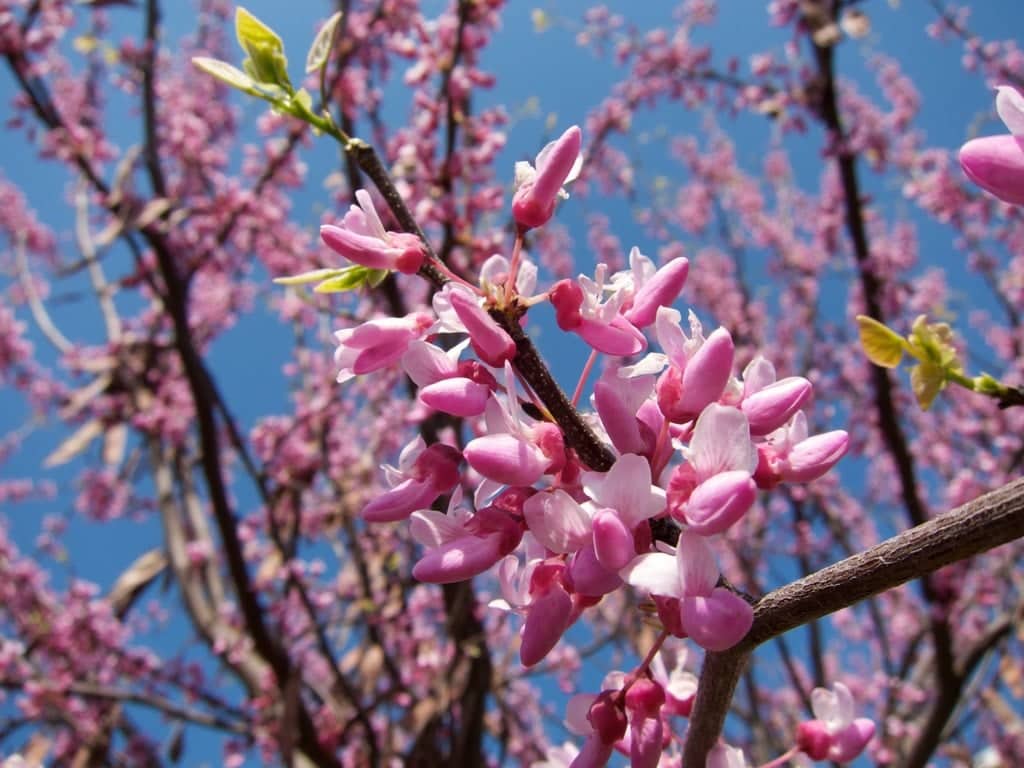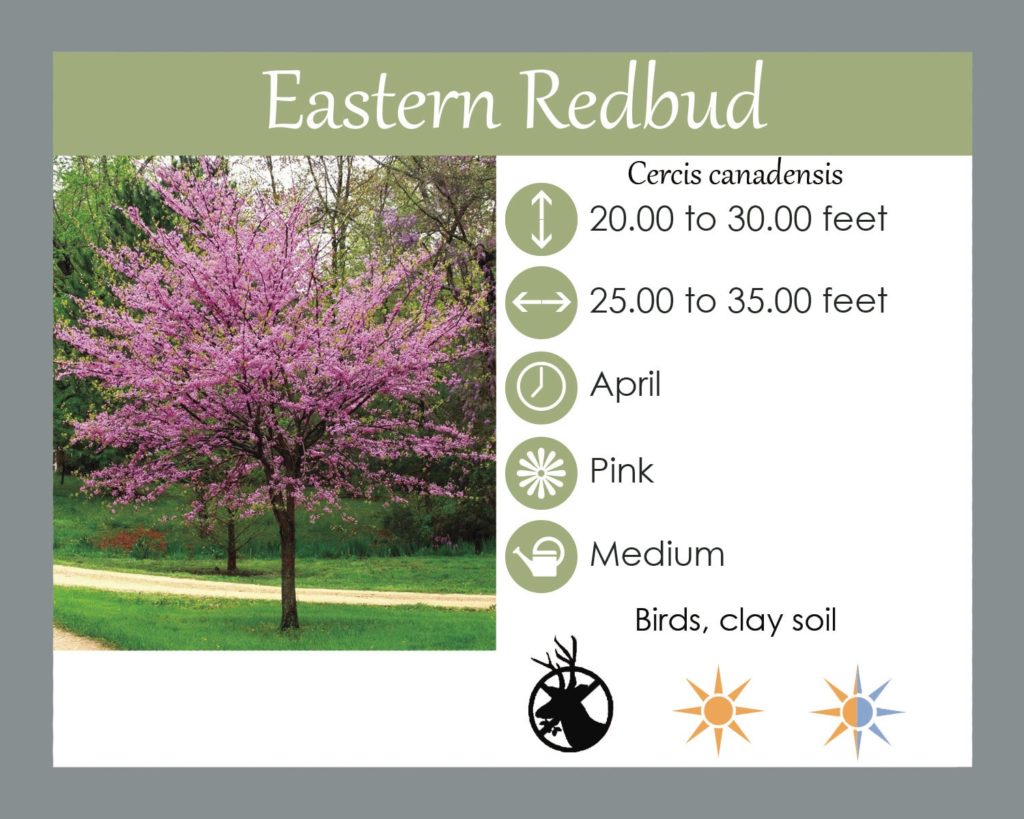Colorful Native Plants for Maryland
Cercis canadensis
Cercis canadensis, redbud, is deciduous, multi-trunked tree. The tree displays clusters of rosy-pink flowers in early spring. The redbud flowers are then followed by bean-like dry seedpods, which can remain on the the tree into the winter. The leaves on the tree are a pale yellow to greenish-yellow in the fall. Redbud trees have great multi-season interest and are wonderful in lawns or as a street tree. As they grow, they can tolerate full sun but prefer a little shade as it does best in part shade conditions.
LGS Notes:
This is one of the first blooms in the spring. It’s such an exciting time to drive and see the purple/pink buds on trees all along the highway. I use this tree a lot in residential settings because it’s a smaller ornamental tree that won’t get so large that it over takes a house. Ring-neck pheasants, quail, goldfinch and cardinals have been seen eating the seeds from redbud. The tree is also a larval host to 12 different Lepidoptera species. ~Lauren
Redbuds are one of my favorites. I love including them in designs. I frequently use them as a specimen tree. They definitely add a romantic element to any garden! ~Chrissie
Cultivar of Cercis canadensis



